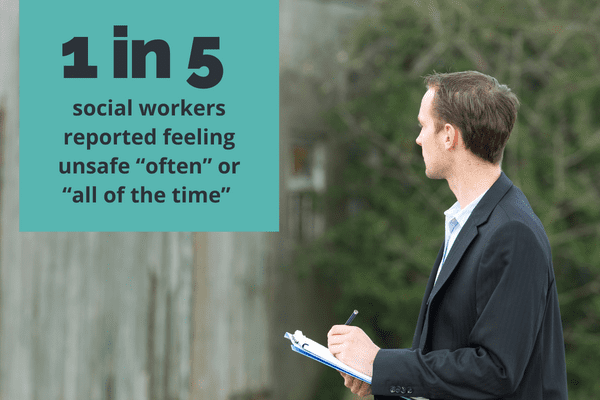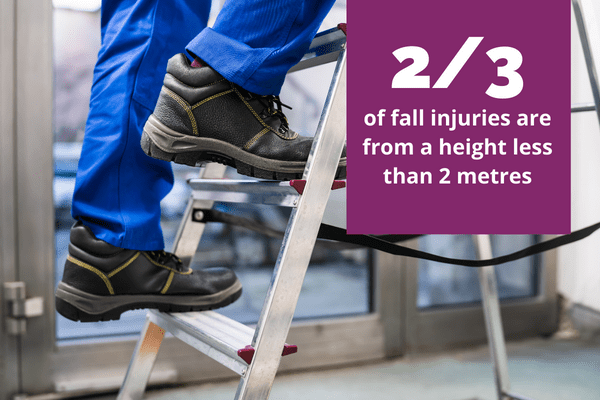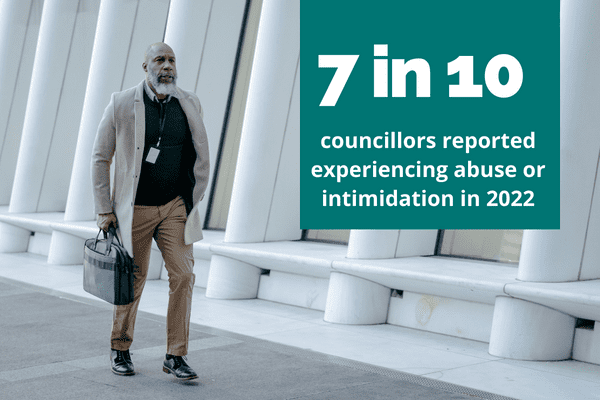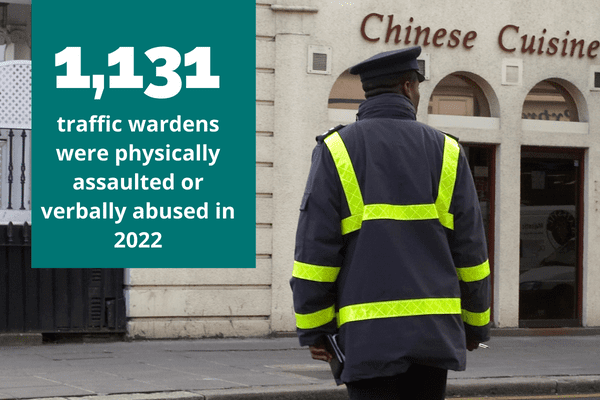When we speak to our Local Authority customers, the team members they are most concerned about vary. For some, it’s the employee they have working in a remote area of the countryside repairing a broken flagstone path. For others, it’s the councillor going to meet their constituents.
We’ve spoken about looking at your risk assessment through the lens of lone working in the past, and how that can better highlight the hazards, so what are these hazards from the perspective of a Local Authority?
We look at the types of risks which are relevant to common job roles and working areas within a local authority.
Social Care and Housing

The threat of violence: In 2021, Sulai Bukhari was charged with attempted murder after stabbing a social worker during a home visit. Two years earlier, social care worker, Belinda Rose was killed after being stabbed by the landlord of supported living properties.
Figures released that same year by GMB Union suggest that while extreme examples, these are not isolated incidents. The statistics revealed that there were more than 6,000 violent attacks on care workers during 2013-2018, a figure that’s feared to be higher by the HSE, as incidents are often under-reported.
It’s little wonder then, that 1 in 5 social workers reported feeling unsafe “often” or “all of the time” in a 2014 survey from Community Care.
Housing officers face many of the same risks, as they enter a similar environment daily to do their job.
Working in pairs would go some way to lessening this risk, but isn’t always possible, while better risk assessments, closer work with police and the provision of safety equipment, such as panic alarms can also help prevent violence and make social workers feel safer in their day to day roles.
Social worker stress and burnout: In addition to the threat of burnout in more general terms, those working in the care sector can also experience compassion fatigue and secondary traumatic stress. Heavy caseloads and poor work-life balance will exacerbate periods of prolonged stress, which can lead to burnout. While this condition isn’t exclusive to lone workers, it can have a knock-on effect on their ability to safely carry out their roles.
Lack of patience and difficulty in maintaining focus, both of which are symptoms of burnout, can be catastrophic in a scenario where seemingly unending patience is required, and focus on health and safety measures is essential. Compassion fatigue can present as indifference, which might lead to an escalation of aggression if service users feel their struggles are not being taken seriously.
Maintenance

Working in isolated environments: If one of your maintenance workers is looking into an issue in a building where other people are working, are they a lone worker? You don’t need to read through HSE’s definition of lone working to answer this. Instead, you should ask yourself whether anyone would know if there was a problem.
We’ve spoken to Health and Safety Managers who have reminded their maintenance operatives that while there are other people in the building, they’re not there to look out for the one person who is working far away from others under the same roof.
On the other end of the scale, repair and maintenance tasks might take your lone worker out into the wilds of the countryside. Uneven ground can lead to slips, trips and falls, while heavy exertion might unearth a previously unknown health condition.
These risks are compounded by the very fact that this person is working alone, and your risk assessment should question whether someone, such as a teammate with a health condition, is suitable for roles where lone working is a frequent occurrence.
Working at a height, with hazardous materials, or with equipment: The work of a maintenance operative is diverse, and to carry out their roles, they need help from hand tools, mechanical equipment and ladders.
Falls from a height are the leading cause of death in the workplace, with 29 fatalities in 2021/22. The number of non-fatal injuries equates to 97 a day, and two-thirds of these are from a low fall, which is two metres or less. Gutters and roofs which require inspection will certainly be above this height. Injuries from a fall include:
- Head and brain injury
- Spinal injury
- Rib fractures
- Lung contusion
- Cardiac and aortic rupture
- Broken limbs
- Amputation injuries
For these injuries, immediate medical attention can mean the difference between life and death. But if your maintenance operative is working alone and becomes incapacitated, or even if they’re using a buddy system, they might not get the timely help they need.
Elected councillors

Violence and aggression: Elected councillors will have frequent interactions with members of the public, whether this is at ward surgeries, evening meetings, or even when a councillor might visit one of their constituents in their own home if they are less mobile.
The risk of violence arises from the nature of such meetings, which might leave members of the public feeling upset or angry. There’s also the possibility of muggings if councillors are believed to be carrying confidential information.
Sadly, the deaths of MP Jo Cox 2016 in and Sir David Amess in 2022 are a terrible reminder of the threat of violence elected councillors face. Such is the fear around a repeat incident, that Jo Cox’s sister, Kim Leadbetter who holds the Labour seat in West Yorkshire said she believes that there is no way of conducting open surgeries safely.
Advice around personal safety might include having a communication protocol, ensuring clear exits, creating barriers between the councillor and the would-be assailant and carrying a personal alarm. Understandably, some MPs, such as Jo Cox’s sister, Labour MP Kim Leadbetter, have decided that the safest course of action is to not hold open surgeries at all.
Civil Enforcement Officers

Aggression, intimidation and violence: Civil Enforcement Officers (CEOs), formally and more commonly known as Traffic Wardens, have been the responsibility of Local Authorities since 1991, having previously been employed by the Police. Despite the important role they play in preventing traffic chaos and pedestrian injury, they have unjustifiably never enjoyed a positive image.
But it’s when this negative attitude escalates into aggression that CEO’s come into harm’s way. In 2008 a traffic warden working for Wandsworth Council was left in a critical condition after being attacked by two men outside a pub in Clapham.
21-year-old traffic warden Charlie Weston’s own attack was caught on camera in 2018. His colleague, who he happened to be on the phone with at the time, called an ambulance.
Working alone and negative perceptions create a perfect storm of aggressive behaviour, with CEOs seen as fair game. Body cams have helped bring the number of attacks down, and offer evidence in cases where violence has broken out, while a radio can be used to ask for assistance. However, this relies on the CEO being able to physically raise the alarm, assuming they have not become incapacitated.
Control Measures
How can a lone worker solution protect against these hazards in a Local Authority?
While many Local Authority employees may never experience these incidents themselves, the Health and Safety Manager has to look at the worst-case scenario and make necessary preparations, which is where a risk assessment and control measures come into place.
Our lone-worker solution offers support in many of these scenarios, not just by providing a way to raise an alarm, but to offer that added level of confidence to those who do feel under threat. Our cloud platform can give the lone worker managers their own peace of mind, with better visibility on their team in the event of an incident, and reporting to show user adoption.
Pick Protection lone worker app safety features:
When they’re used, how, and by whom
SOS Alarm: Many of the above risks are associated with face-to-face interactions and confrontation. Our PG Smart App can be paired with a small Bluetooth trigger device, the PG Click, which attaches to a lanyard, belt loop, or set of keys. This allows lone workers such as social workers, housing officers, civil enforcement officers and elected councillors to raise an alarm quickly and discreetly.
Time at Risk: A Time at Risk can be set for a specific timeframe, for example, the time it takes to visit a tenant or constituent. Perhaps, on learning from past experiences, a Civil Enforcement Officer might set a Time at Risk when patrolling a particular area that’s been problematic in the past. They might also add a Pre-Alert (see below) to provide extra information. The Time at Risk can be extended if the meeting is running over, or ended early. But if the time elapses, an alarm will be raised.
Pre-Alert: This tool lets the user add specific information which might be useful if an SOS is later raised. A ground maintenance technician might note heavy snow as they repair a pathway in a remote part of the countryside. Other workers, such as those in social care and housing, or an elected councillor, could provide details of a meeting, such as which part of the building it will be taking place in.
Fall Detection: Back to those maintenance technicians who may be working up a ladder in a distant corner of a large building – Fall Detection can raise an SOS alarm the moment it detects a fall, without any action from the user. If it was a false alarm, or there was no injury, the user has 20 seconds to cancel this before the alert is sent.
A note on coverage: These features can be accessed even in areas of low coverage. When there’s not enough signal to open the line of communication in an SOS alert, the app will use available data to send an alert, providing the location details of the user. In areas of no coverage, our PG X can be used when in line of sight of a satellite to communicate an SOS.
Saving money and using local networks
As part of Pick Protection’s lone worker solution, we offer the option for monitoring, self-monitoring, and a hybrid approach of both.
Monitored: With a fully monitored solution, you can be assured that experienced monitoring staff at our BS8484, NSI Gold Standard Alarm Receiving Centres (ARCs), are ready to receive alerts 24/7, and are trained to assess and manage the situation, whether or not a level one emergency response is needed.
Self-Monitored: If you have an existing security centre, you take the mechanism (PG Smart App and PG Click) and management (PG Cloud) elements of our solution, which will work alongside your own facilities. This is beneficial for a few reasons.
Firstly, from a safety perspective, if you have a traffic warden requesting assistance, the monitoring staff will likely have good connections with services in the local area that can offer support and visibility on who is nearby. Secondly, it is a way of maximising the use of an existing set-up, saving you money on your lone-worker solution.
Hybrid monitoring: You can choose to have high-risk lone workers on a monitored contract, while your lower-risk teammates are supported through the PG Cloud management portal and the app’s emergency contact alert system.
Get in touch
Talk to us about how we can help you fulfil your duty of care, with a reliable, cost-effective lone-worker solution that can be customised to your department or across your entire organisation. Email info@pickprotection.com to arrange or call or request further information.
